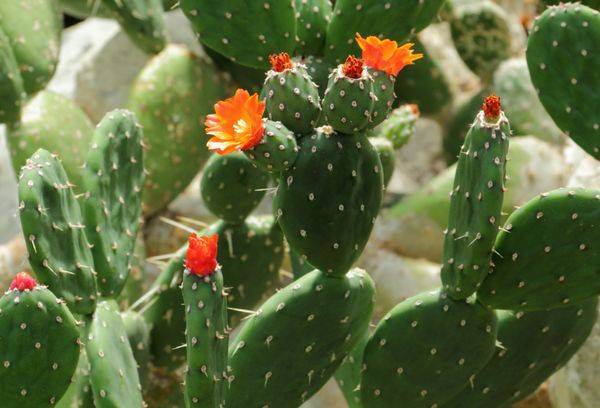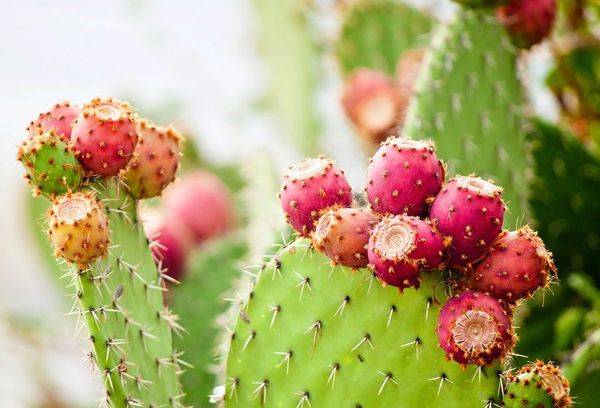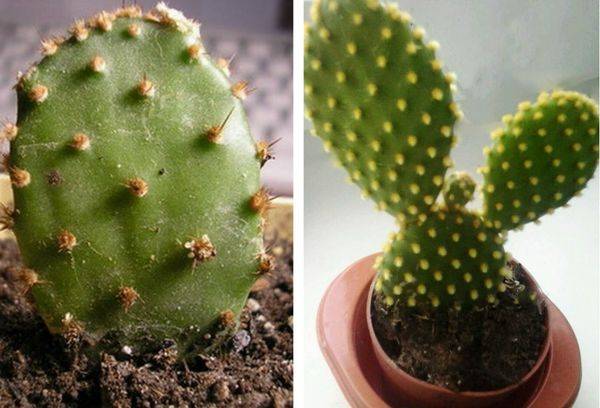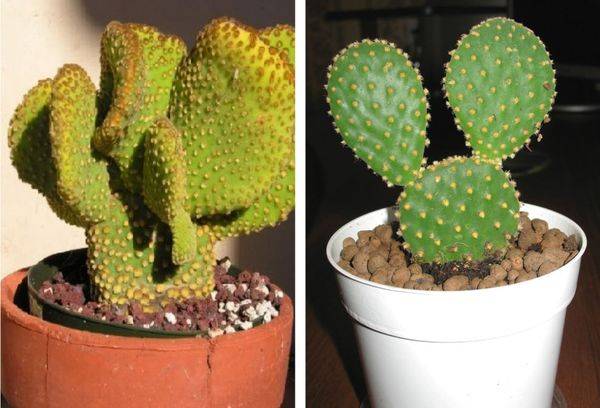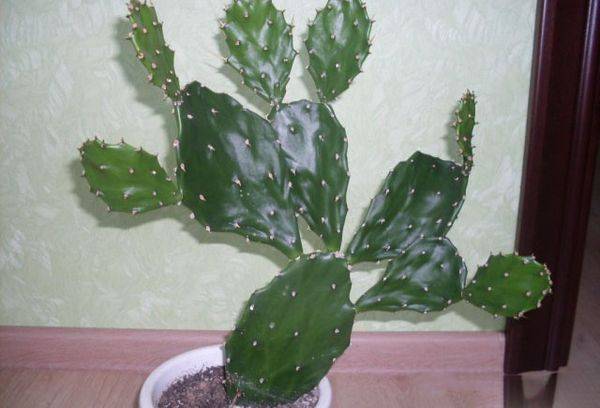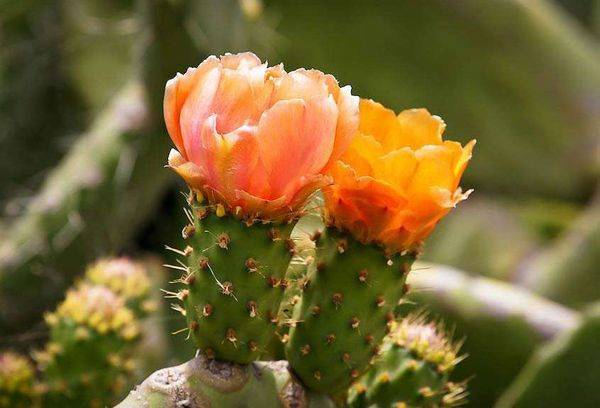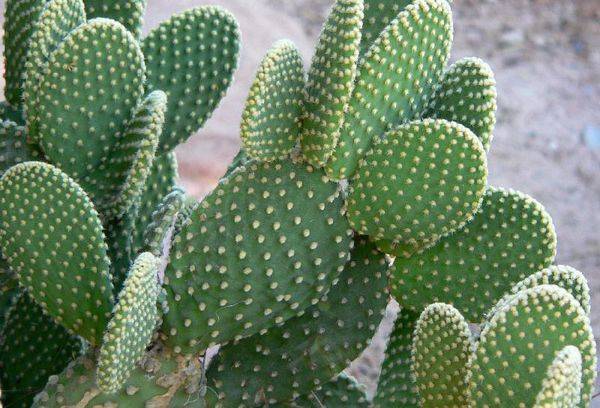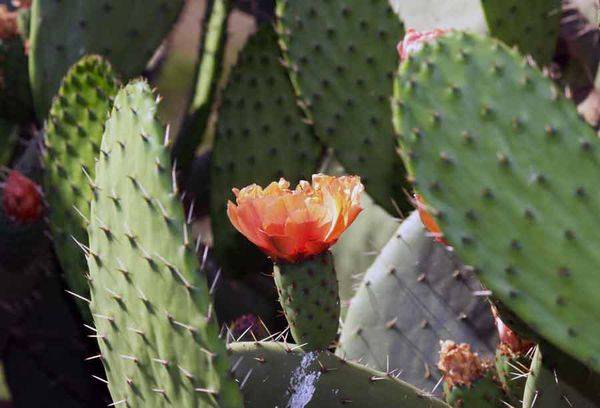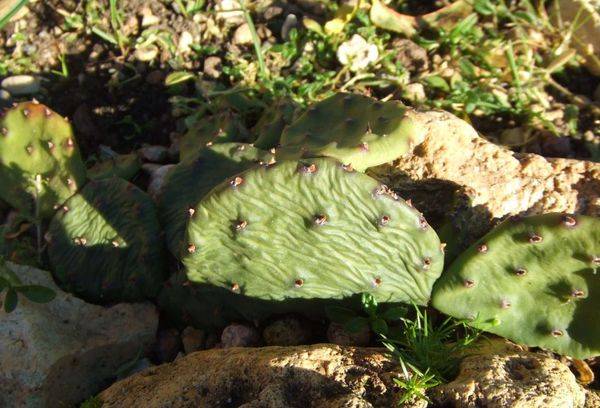How to care for prickly pear cactus at home?
Content:
An interesting solution for the grower is to replenish the collection of cactus prickly pear. This succulent is interesting in that its development is difficult to predict: new shoots appear in completely unexpected places, from which the cactus takes on a bizarre shape.
Particularly successful gardeners are lucky enough to observe the flowering of prickly pears. Why especially lucky? At home, the plant rarely blooms: the reason for this is the difficulty of reconstructing the conditions under which the cactus grows in the natural environment. Growing prickly pears is a curious activity for both professionals and neophytes of floriculture. Let's take a closer look at this amazing plant.
Description
Prickly pear (lat. Opuntia) belongs to the cactus family and is its most numerous genus. There are up to 190 species of prickly pears. They are found in savannahs, tropical and subtropical deserts, coniferous (pine and juniper) forests. The habitat of the cactus is from Canada to southern Argentina, however, more than half of the species grows in Mexico. It is no coincidence that Opuntia is mentioned in Aztec legends.
Since about the 16th century, the plant began to spread to other continents, and now it is found in India, the Mediterranean and the Caucasus. For Australia, prickly pear at one time was a serious test: actively growing shrubs had to be treated with pesticides. In home floriculture, the cactus has taken root around the world, despite the unpredictability of growth and flowering. He found application in areas such as medicine, folk healing, cosmetology and cooking.
Prickly pear is a perennial evergreen cactus. It can be either a creeping shrub or a tree. Cactus stems are articulate, flat and juicy. They have spines and thin spiky bristles - glochidia. On some types of thorns can be seen only under a magnifying glass, which brings harm to the owners of the plant with careless handling.
Cactus flowering palette - from yellow to bright red. Beautiful and large flowers bloom from April to September. Opuntia fruits are like berries, they are flat, juicy, sweet and fragrant. Some of them are edible, for example, a variety called "Indian fig." Inside the berries light medium-sized seeds ripen.
Kinds
The genus has about two hundred species, each of which is of interest. The most popular types of prickly pears for growing at home:
- The prickly pear prickly pear is the owner of large yellow flowers with a green stigma. It can grow up to 5 m in height. Of the segments 10-20 cm long, a beautiful crown is formed. The cactus is densely dotted with bristles, which can reach 8 cm in old plants. Another feature is the fragrant edible fruit in the shape of a ball.
- Opuntia Berger - A tall plant native to the Riviera. Blooms profusely with bright orange-yellow flowers.
- Prickly pear represents a cactus with blue-green segments of an obovate form. There are few thorns on the plant, the flowers are pink or deep red. The homeland of the plant is North America (Western Arizona), so it does not tolerate overmoistening.
- Opuntia gosselina - a cactus with a reddish tinge of stems in young specimens and gray-green in adults. The spines of the species are quite soft. Cactus begins to bloom at a young age with beautiful delicate yellow flowers.
- Opuntia curasavskaya spread from the island of Curacao and the nearest islands.A distinctive feature is the narrow and long segments of saturated green color. Because of their shape, the stems are very brittle, which facilitates the vegetative propagation of this type of cactus.
- Golden prickly pear - undersized cactus with beautiful golden bunches of glochidia and yellow-gold flowers. The stems are round in shape.
- Prickly pear prickly. An interesting view with elongated dark green segments covered with soft spines resembling pubescence. Only old plants bloom; the flower is bright red.
- Prickly pear - a winter-hardy plant with beautiful thorns and flowers resembling purple-pink roses. The stems are dense, branched.
- Prickly pears - bright green cactus with lemon flowers. Segments - round or ovoid, spines either absent or are found singly at the ends of shoots.
- Prickly pear It is not for nothing that this name bears: its segments are thick and wide, close in shape to a circle, and can reach a diameter of 40 cm. The flowers are reddish on the outside and yellow inside.
How to care
If you decide to grow prickly pear and hope to see its bloom, then be prepared to provide competent care to the plant. Need to follow:
- behind the lighting
- air access
- by watering
- fertilizer application
- temperature
- You also need to timely transplant and select the appropriate soil.
The prickly pear prickly pear, accustomed to mountain slopes and semi-deserts, needs bright direct lighting and good air access. The cactus feels best on balconies and windows located on the south or southeast side. On the north side, the plant stretches and becomes faded, and flowering does not have to wait at all. After wintering, the cactus should not be immediately exposed to direct lighting, it needs to get used to it, otherwise it will get a sunburn.
The plant is accustomed to temperature extremes. In the summertime, the optimum will be + 23-25⁰ C. In autumn, the temperature gradually decreases to prepare for wintering. In winter, the cactus is comfortable at + 5-7 degrees. During rest, the room should be dry and cool. If you do not prepare the plant for the rest period and do not provide it with the necessary conditions, then it will be deformed.
Prickly pear loves nutritious loose, slightly acidic soils. Soil for a cactus is bought in a specialized store or prepared independently:
- 2 parts of sheet land,
- 1 part of turf land
- 1 part clay
- 1 part sand
- charcoal (optional) for young cacti,
- for old - stucco.
Watering and feeding
Watering is divided into two periods:
- Spring-Summer: A large amount of water is required. Each subsequent watering is carried out only after the drying of the soil.
- In winter, the plant does not need water. The exception is young prickly pear. In some cases, a cactus gives a signal that it needs watering (settles a little). It is necessary to gradually increase the temperature to + 12⁰ and carefully pour the soil. With the onset of the growing season, watering resumes in small portions.
It is important to ensure that water does not fall on the stems of the plant, otherwise the pores are clogged and breathing is disturbed. In hot weather, it is advisable to water only after 17 hours, since the vital processes of the cactus are activated in the evening. Suitable water for irrigation - settled.
Fertilizer application takes place during the growth period - from March to September. Prickly pears one feeding a month is enough. Choose mineral fertilizers with a low nitrogen content (to avoid root decay). It is better to refuse organic fertilizers. During dormancy, the plant is not fed.
About flowering
In indoor conditions, prickly pear prickles rarely blooms. Perhaps this is due to the fact that in the wild the cactus grows well, and at home its growth is limited. Another reason is that the growing environment is not close enough to the conditions of the natural habitat of the plant. Nevertheless, flowers on prickly pears bloom, and not only in the garden, but also in the apartment.
purityis.decorexpro.com/en/ has put together some useful tips for handling flowering plants:
- do not turn the pot with prickly pear,
- do not rearrange closer to the light,
- do not transplant
- Do not change the amount of water and fertilizer.
If at least one condition changes, the cactus will drop the buds, or they will transform into vegetative shoots. After a flowering period, watering is gradually reduced, feeding is stopped. The plant must be prepared for the rest period by moving it to a cool room. There it will rest without watering until spring.
Transplantation and reproduction
Opuntia cactus does not like to be disturbed often. Therefore, young plants are transplanted once a year, and 3-year-olds and older move to a new pot every 3-4 years. The procedure is carried out in early spring before active growth begins. You can only move the plant when there are no buds.
Cactus propagates in two ways: seeds and cuttings. Propagating to seeds is a laborious task. Seeds germinate slowly, but if seedlings appear, the plant will be large and strong. Sowing is carried out in early March. The peculiarity of prickly pear seeds is a hard shell, which makes germination difficult. Therefore, it is necessary to mechanically destroy it with sandpaper or a file. Another important procedure is the disinfection of seeds in a weak solution of potassium permanganate for 10 minutes.
Prepared seeds are planted in a mixture of sheet soil, sand and charcoal (proportion 2: 2: 1). Planting temperature - at least + 20⁰ C, the soil must be constantly moistened. After emergence, they are dived into suitable pots. The next transplant is in a year.
The time for propagation by cuttings is from spring to July. The segments are carefully separated and dried in an upright position for several days until a dense film forms on the slice. Then the cuttings are rooted in disinfected soil by 3 cm, covered with a plastic bag and periodically aired. It is worth noting that young cacti require constant ventilation and good lighting, but they should not be exposed to direct sunlight.
Growing difficulties
Sometimes flower growers are faced not only with a lack of flowering, but also with growing problems such as deformation of the stem and various spots. Here are some undesirable situations and their possible causes:
- The stem is stretched or deformed. The reason is an excess of heat during the wintering period or a lack of light during the growth period.
- The end of the stem is wrinkled - you may have waterlogged the soil.
- At the bottom of the stem, soft rot stains - excess moisture or watering in cold weather.
- Poor growth is the result of a lack of nutrients or insufficient watering in the summer.
- Brown spots on the stem - prickly pear was attacked by pests.
Many types of prickly pears are covered with microscopic thorns - glochidia. These invisible hairs with hooks dig into the skin at the slightest touch.
Tip
If you have caught a glochidia, pull it out with tweezers in a soapy solution. Better not touch a cactus without rubber gloves.
Diseases and Pests
What is the case of prickly pear:
- late blight,
- gray rot
- root pit rot.
These diseases are caused by a fungus that comfortably exists in waterlogged soil saturated with nitrogen. In cases of infection, diseased parts of the plant are removed and fungicide treatment is carried out.
Prickly pear also suffers from pests:
- aphids
- spider mite,
- mealybug,
- scale insects
- whiteflies
- nematodes.
Sucking parasites breed on prickly pears, feeding on its cellular juice. It is easy to get rid of them by double treatment with a solution of acaricide. Re-processing is carried out after a week. Make sure that the drug does not enter the soil. Nematodes damage cactus roots.If you find that the prickly pear root has swollen, cut it to a healthy tissue, dip it in hot water (50⁰ C) for 10 minutes, then dry the root, treat it with charcoal and plant it in disinfected soil.
Interesting Facts
Prickly pear is not just a beautiful cactus. The plant contains a lot of interesting things:
- Prickly pear - a source of such beneficial substances as glucose, calcium, magnesium, phosphorus, ascorbic acid. Based on cactus, medicines are made for the treatment of diabetes, respiratory system diseases, oral diseases, and digestive organs problems.
- Parts of the plant are used for hair and skin care, for general cleansing and strengthening of the body, for the treatment of hangover.
- From prickly pear make glue, oil, food coloring.
- It is included in the composition of deodorants, soaps and other detergents.
- The Aztecs already consumed the fruits and stems of prickly pears in food.
Here is such a multifaceted prickly pear: beautiful in appearance, capricious in care, but with a lot of useful properties. This cactus is a worthy decoration of an apartment or site.
